Maya Spirituality: A Photographic Exploration of Contemporary Maya Ritual in Guatemala
Citation: McGraw, John J. “Maya Spirituality: A Photographic Exploration of Contemporary Maya Ritual in Guatemala.” First published in Material Religions Blog. 9 Sept. 2015. Republished in The Jugaad Project, 21 Jul. 2019, thejugaadproject.pub/home/maya-spirituality-a-photographic-exploration-of-contemporary-maya-ritual-in-guatemala [date of access]
Maya spirituality, as practiced in the highlands of western Guatemala, includes a vibrant tradition of ritual typically practiced outdoors, in nature.
Altars
Altars, both private and public, indoors and outdoors, play a prominent role in Maya spirituality. They are sites of ritual practice--worship, meditation, and celebration--and places thought to hold special power. Offerings are commonly made at altars. These offerings are made with a reciprocal expectation of receiving. Just as humans are capable of offering the lords of the days, or nawales, things that they cannot otherwise provide for themselves, so do humans expect nature to be bountiful with its food sources and other blessings. It is a kind of gift exchange cycle. But gift in the sense of giving, not as a simple present, because these gifts are actually the very "stuff of life." Both parties provide each other consistent sustenance, made using a variety of offerings, accompanied with a deep sense of gratitude, and, most essentially, infused with beauty and hope.
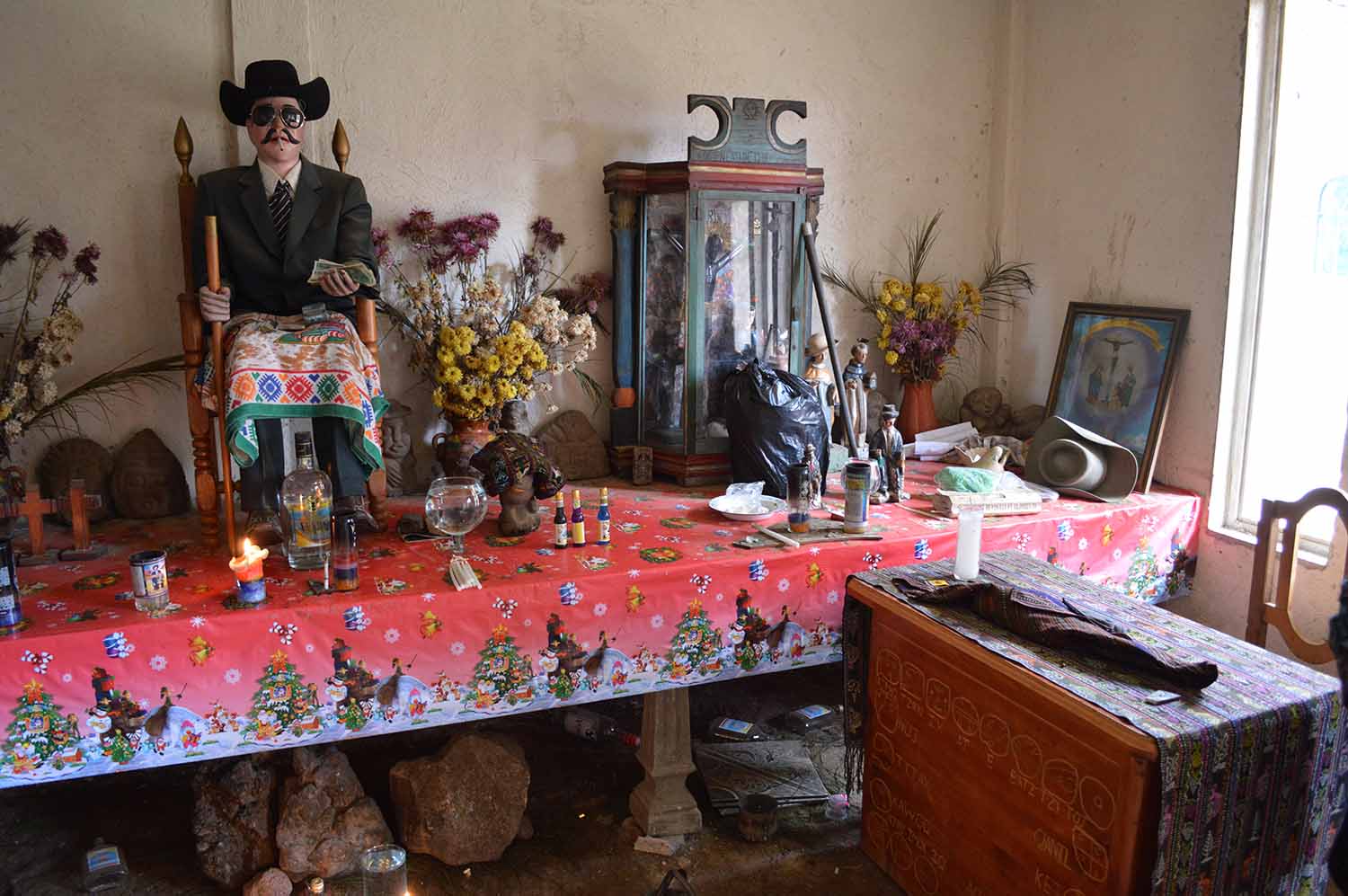
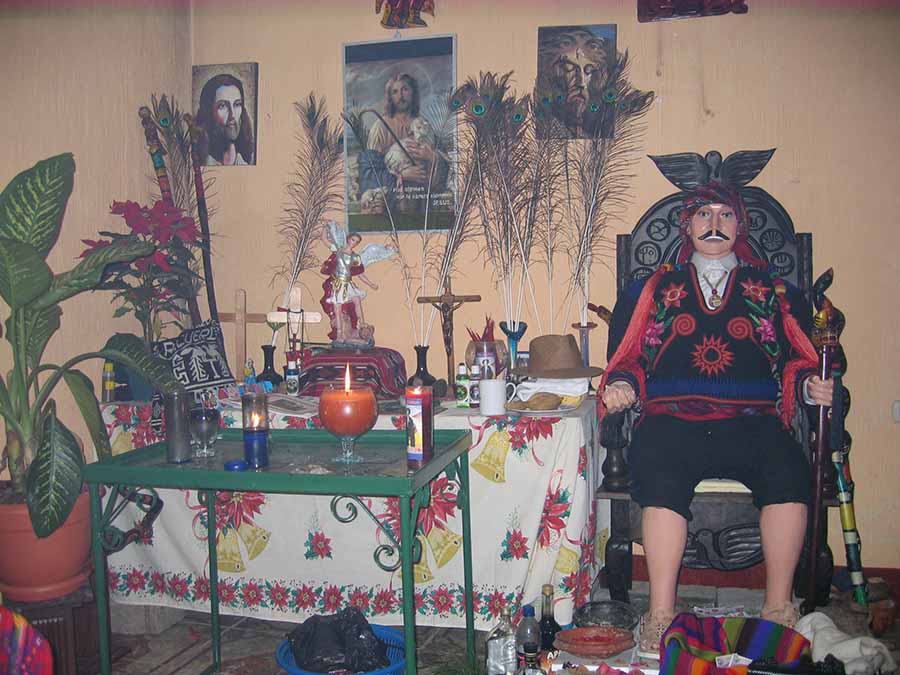
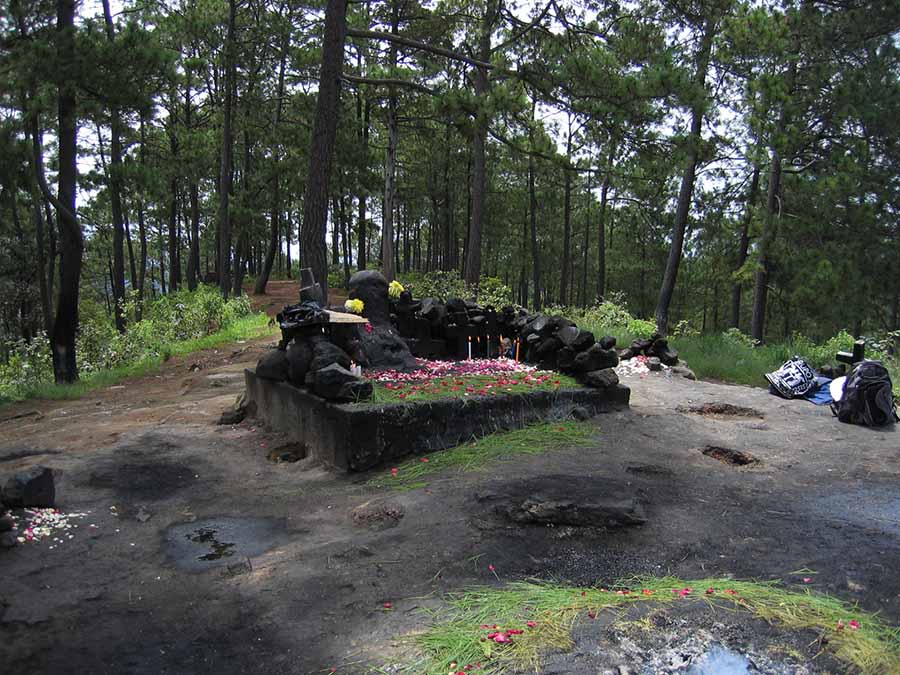
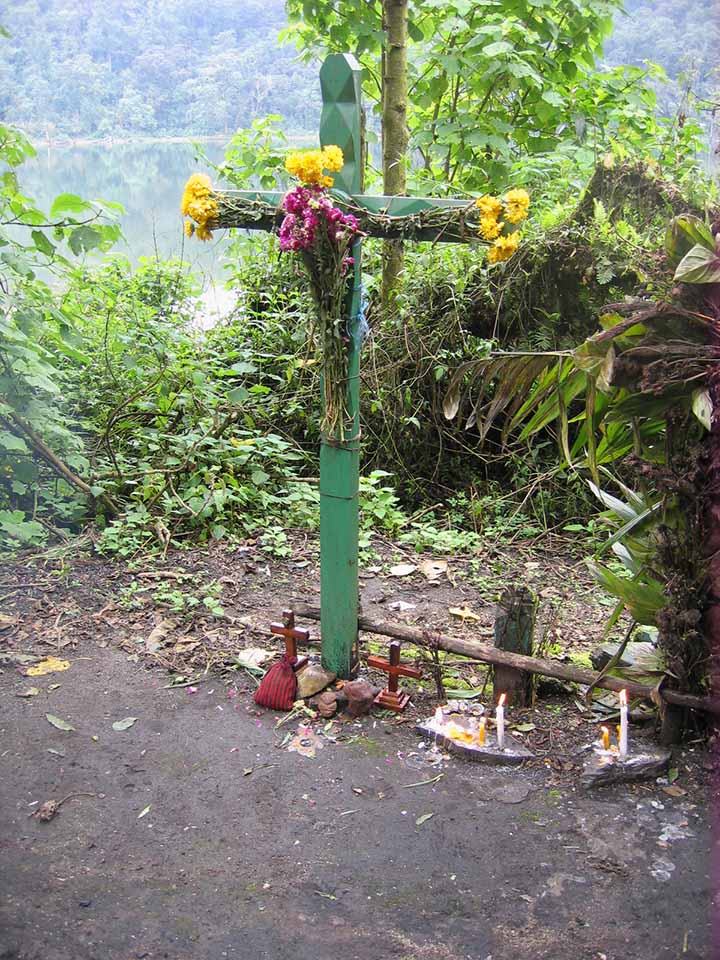
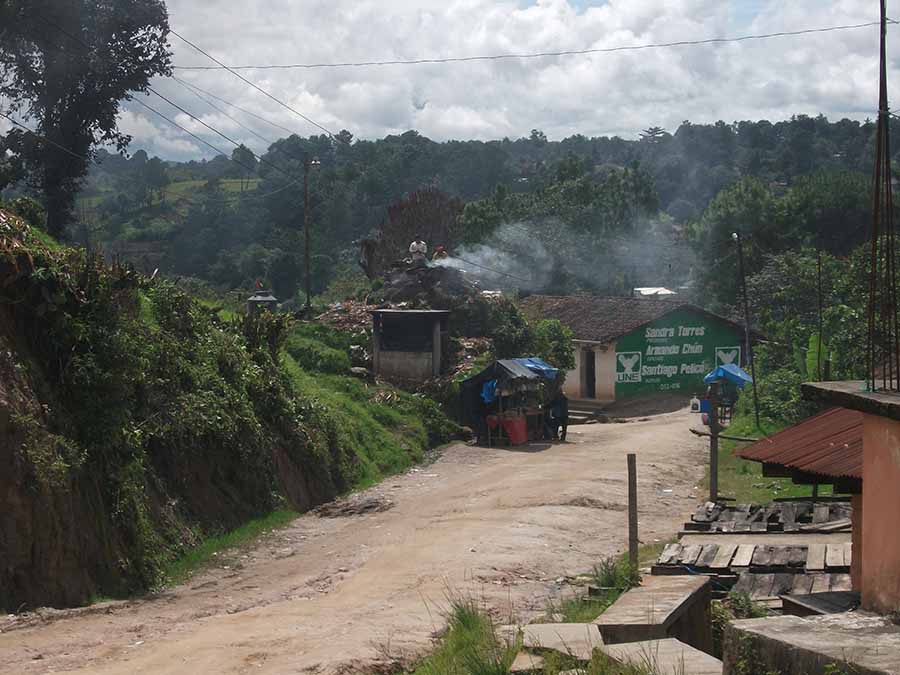
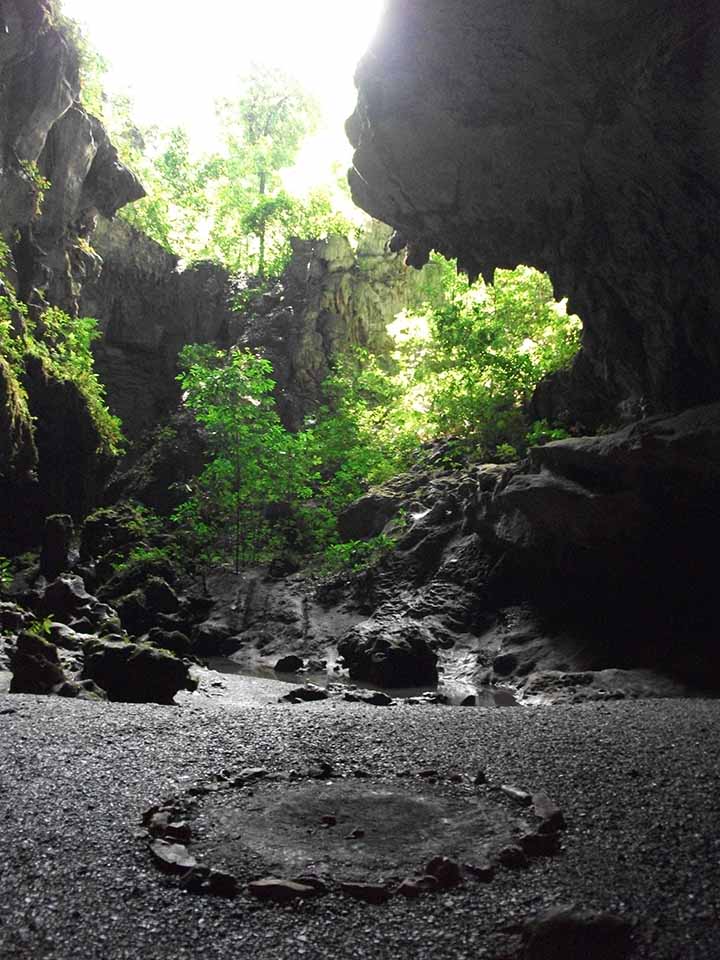
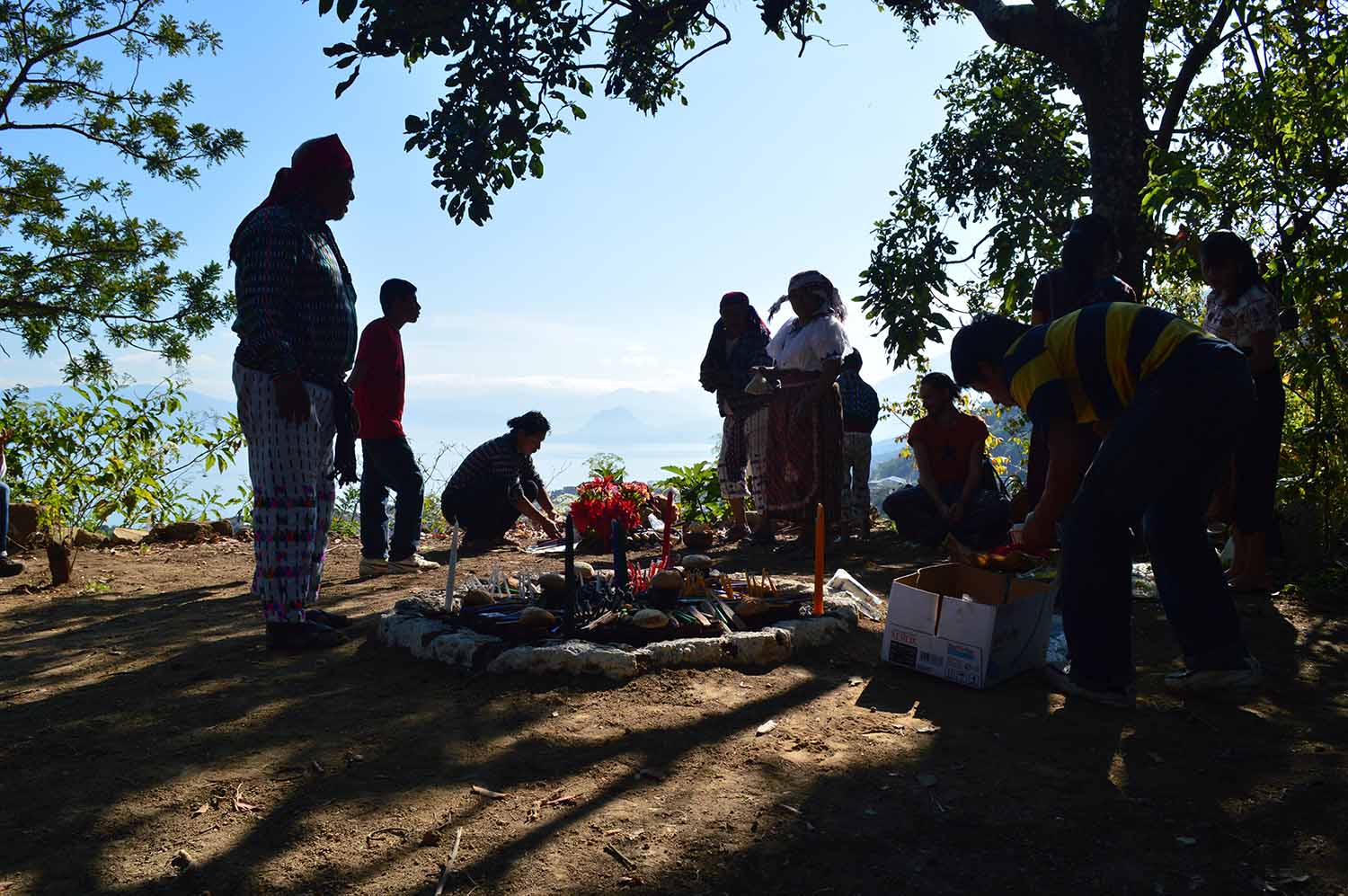
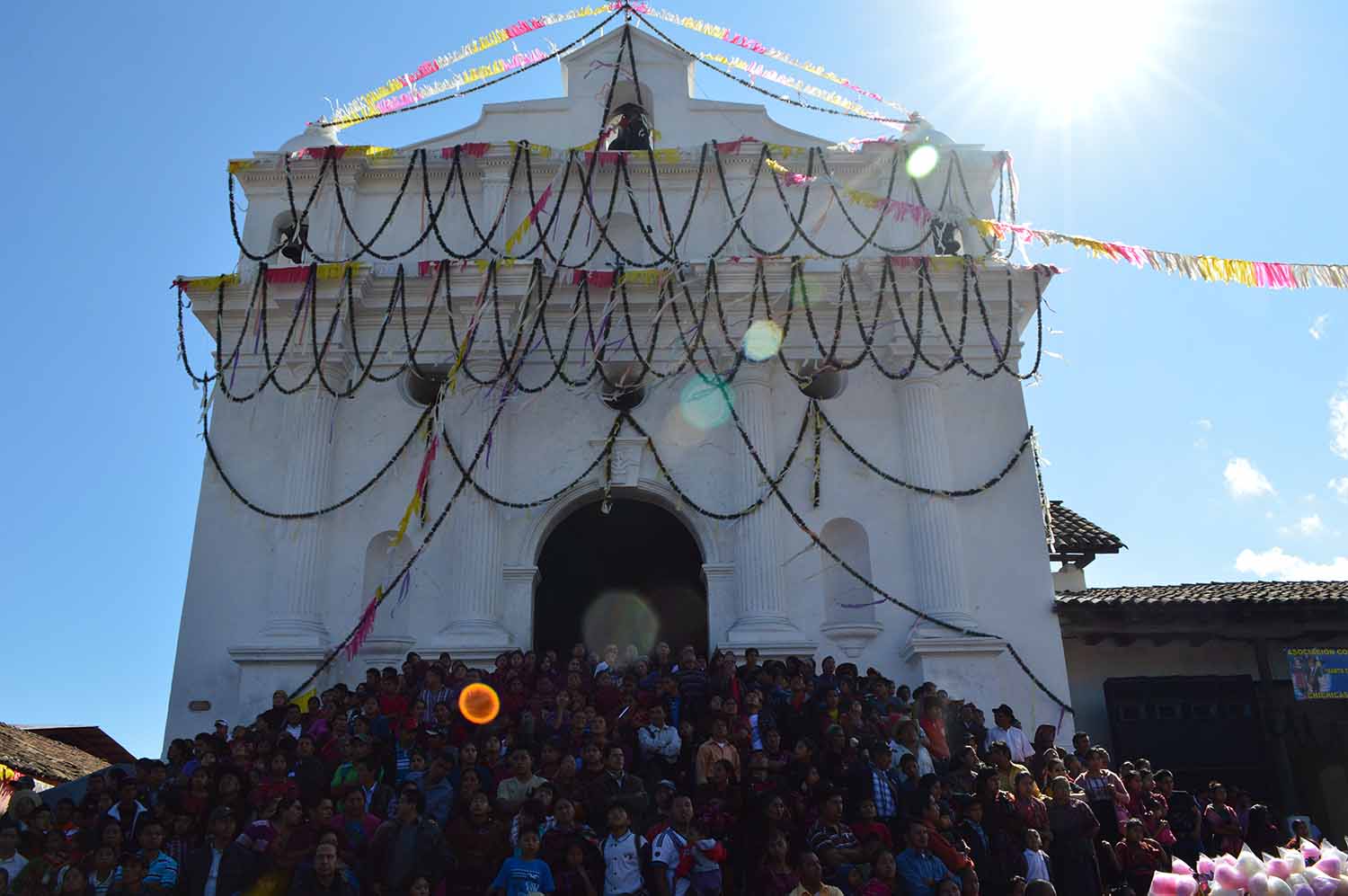
Left to Right, Top to Bottom
Figure 2. On the right is a mannequin of "Maximón" (aka, San Simón, Rilaj Mam, ... ), an enigmatic indigenous "saint." And though he's typically represented as a Ladino, a non-Maya, he's the chief proponent of tradition and costumbre, the "old ways," especially ritual.
Figure 3. Pascual Abaj, just above Chichicastenango, is one of the most famous sites in the highlands. Some of the old idols at this altar had been damaged by feverish evangelicals over the years.
Figure 4. Crosses are commonly raised at such sites, both because the equilateral cross is a very important Maya symbol as well as because the cross serves as an effective amulet for warding off zealots' undue attention.
Figure 5. Public altars, such as this one, chutisabal, are often known as "burning places" because ceremonial fires are the chief ritual activity done there. In the last two captions, the suffix "-bal" is at the end of each word. This means instrument or place for a certain kind of activity, both having a semantic core regarding function--objects or places for a human use--though categorized unusually across two domains.
Figure 6. Caves have long been revered sites. Rituals, including fire ceremonies, are commonly offered at the entrance to, or even within, caves.
Figure 7. Altars are frequently in stunning natural settings that afford grand vistas and special experiences (e.g. lakes, waterfalls, caves, monoliths, mountains).
Figure 8. Altars are even in front of, or within, Catholic churches. Ritualists often make offerings on the steps in front of Santo Tomás.
Calendars
The 260-day ritual calendar known as the Cholq'ij ("ordering of the days") is at the core of ritual throughout the highlands. As archaeology and anthropology have developed, they have enriched the knowledge and practices of Mayas who readily integrate this new information about their revered ancestors into their own processes of identity-formation. For instance, the icons and cartouches featured in the mural above were long known to be hieroglyphs but their meanings were lost. During the 20th century, social scientists, in dialogue with contemporary Maya peoples, deciphered more than 90% of the hieroglyphs from the Classic Period (250CE-900CE) and these numbers, icons, and cartouches were linked back to their proper identifications. The cartouches represent each of the 20 days (nawales) that, combined with numbers one through thirteen, yield the 260-day ritual cycle. Now these nawales from Classic Period iconography are visible everywhere as: business emblems, features of huipiles (blouses), keychains, and jewelry.

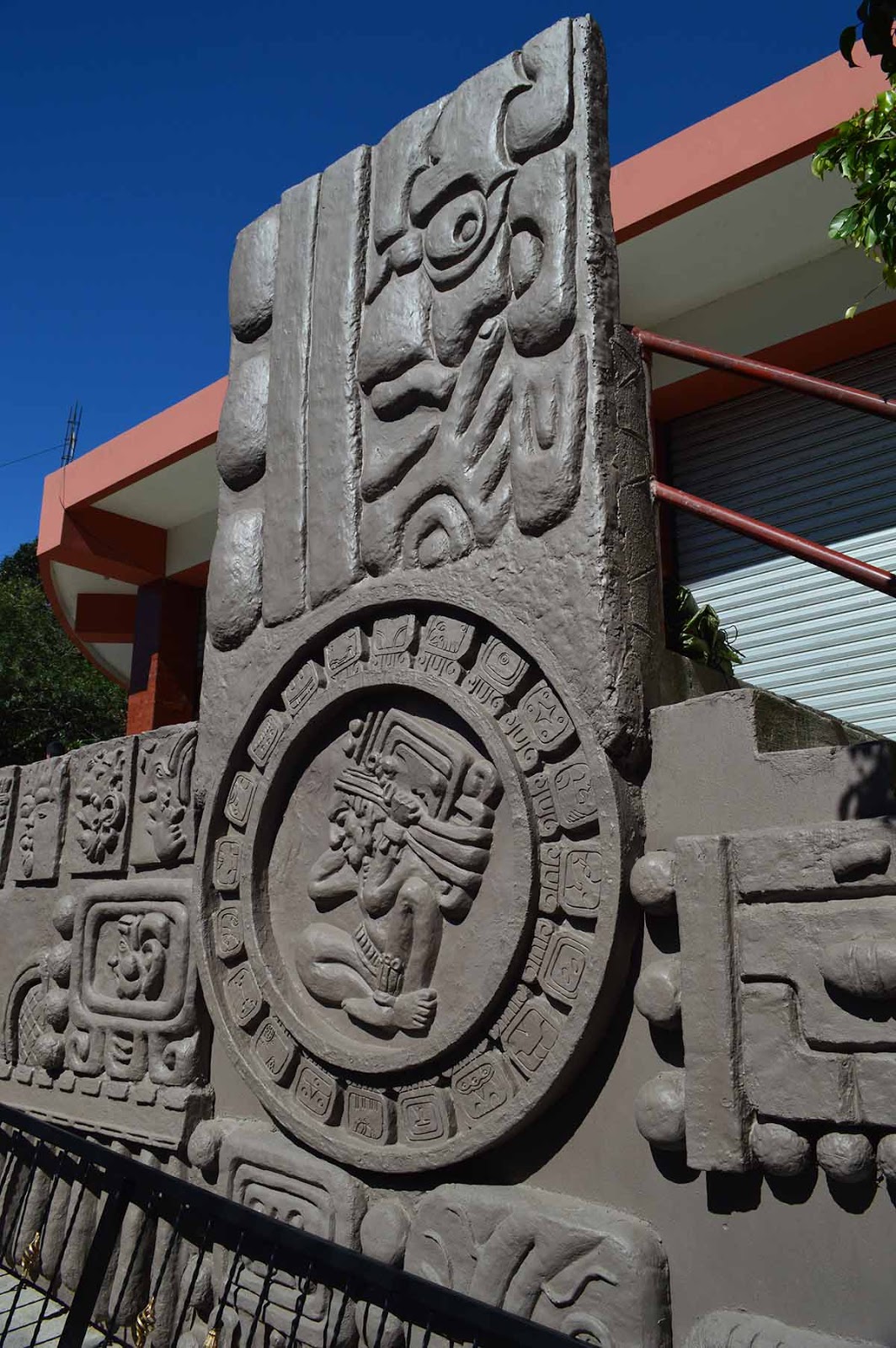
Figure 10. This impressive sculpture, approximately 10m long by 3m high, is dated to commemorate the end of the 13th b'ak'tun, thought by academics to have been on December 21, 2012.
Ceremonies

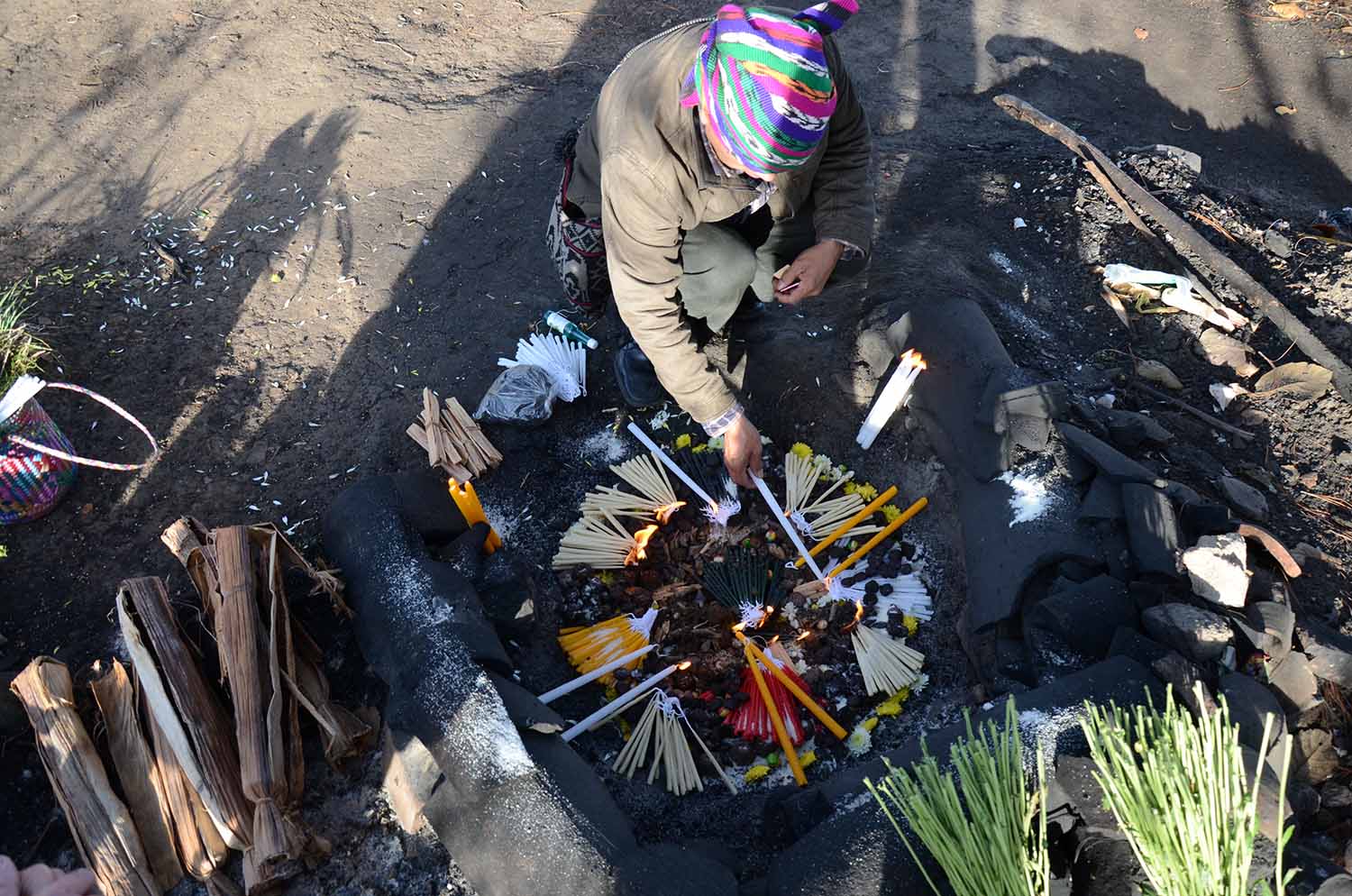
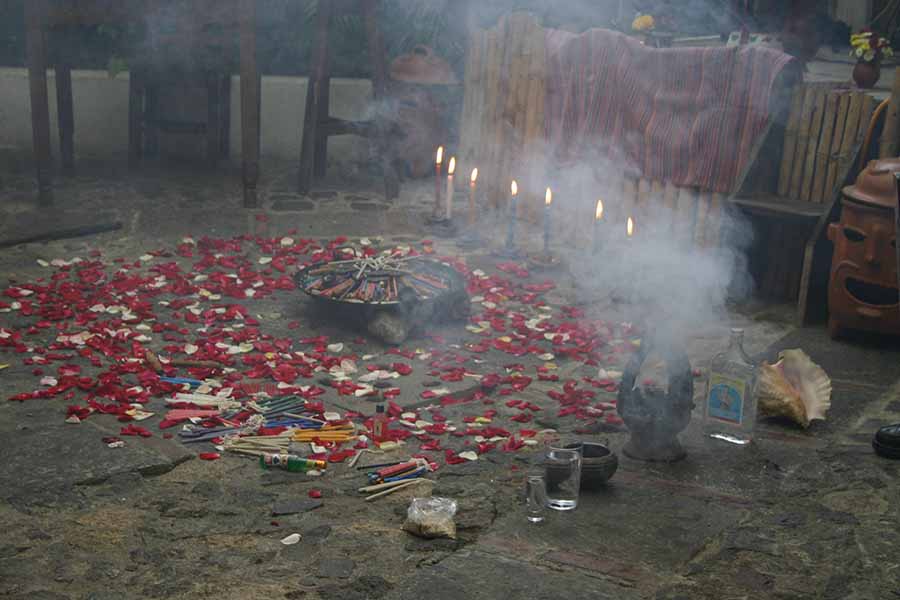
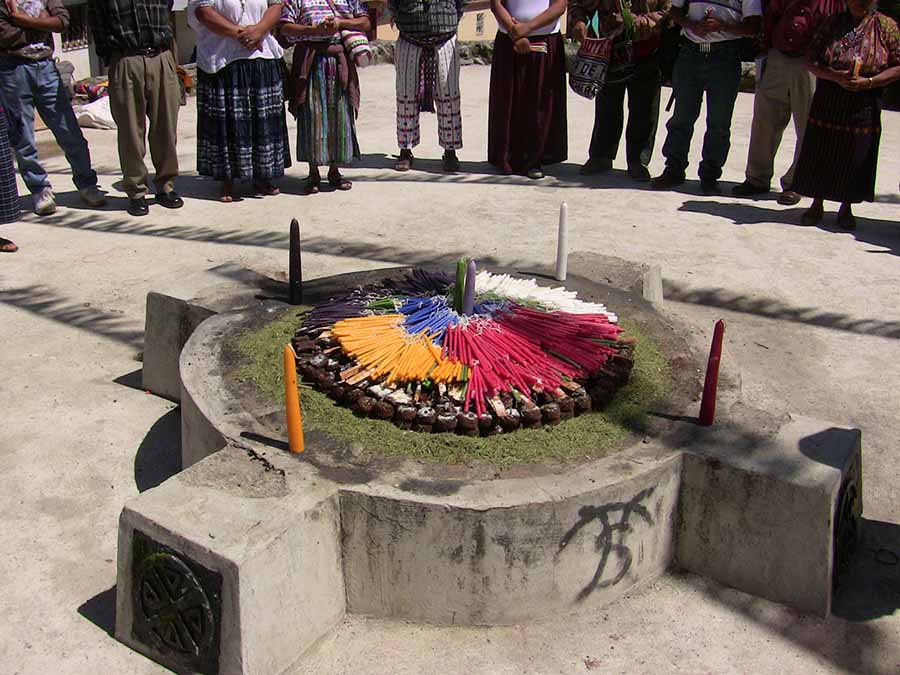

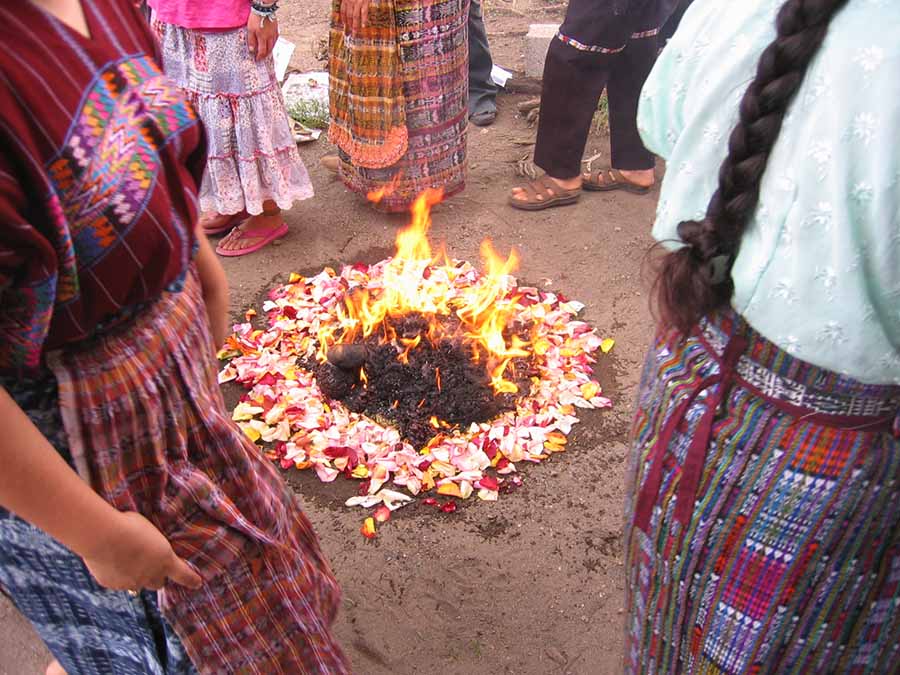
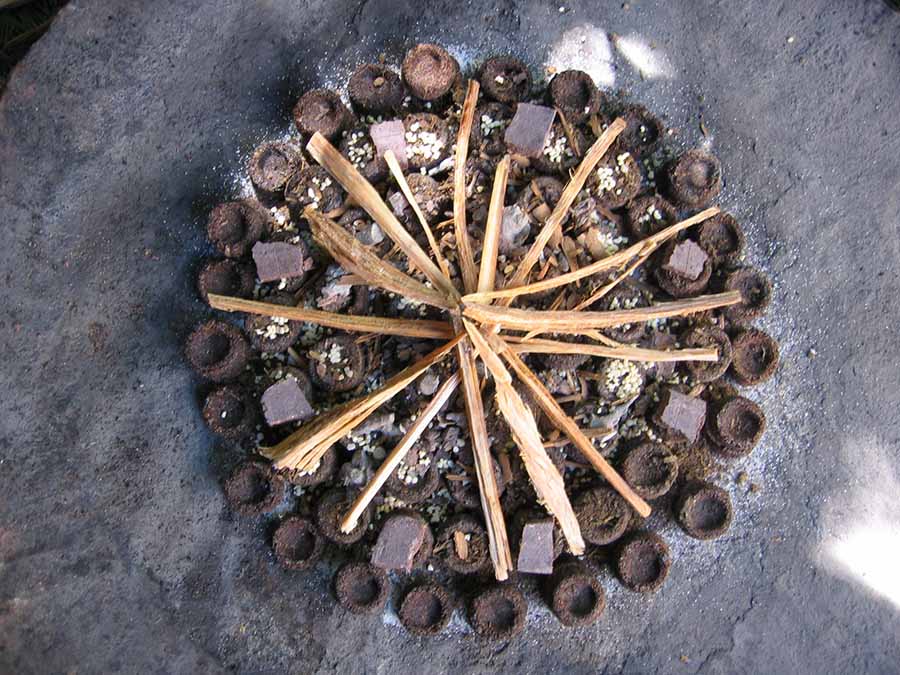

Figure 11. This K'iche' ajq'ij is finalizing preparations for a ceremonial fire. These fires are celebrated for all sorts of purposes. The offerings burned in the fire frequently include sweet items, like honey, chocolate, candies, or pure sugar, as seen in the photo above. The aromas of these sweet things burning is sustenance for the nawales.
Figure 13. The ceremonia Maya is known by a few names throughout the highlands, the Spanish ceremonia or ceremonia Maya being the most common. Other names include xukuleem and mejeleem, both referring to kneeling or being on one's knees, and kotz'i'j, the most common word for flower and "adornment" or, one might say, "pageantry."
Figure 14. Catholicism has often had a chummy relationship with Maya ritual, at other times not so much. This congregation of ajq'ijab' (pl.) was able to celebrate a ceremonia Maya at a special altar, made just for the purpose, in the courtyard of a Catholic church.
Figure 15. Ceremonies are celebrated in places thought to be holy for a variety of reasons. Archaeological sites, ruins of the ancestors, are uniformly taken to be very holy places. Traditionalists visit these places for rituals and other celebrations.
Figures 16, 17, 18. Myriad ingredients go into the ceremonia Maya (fire ceremony). Typically, practitioners offer more elaborate, and expensive, offerings in proportion to the importance of the request. Above are pine pitch brickets, known as ensartes, compressed into aromatic disks and stored as cylinders in maize husks, as another form of food.
Materials

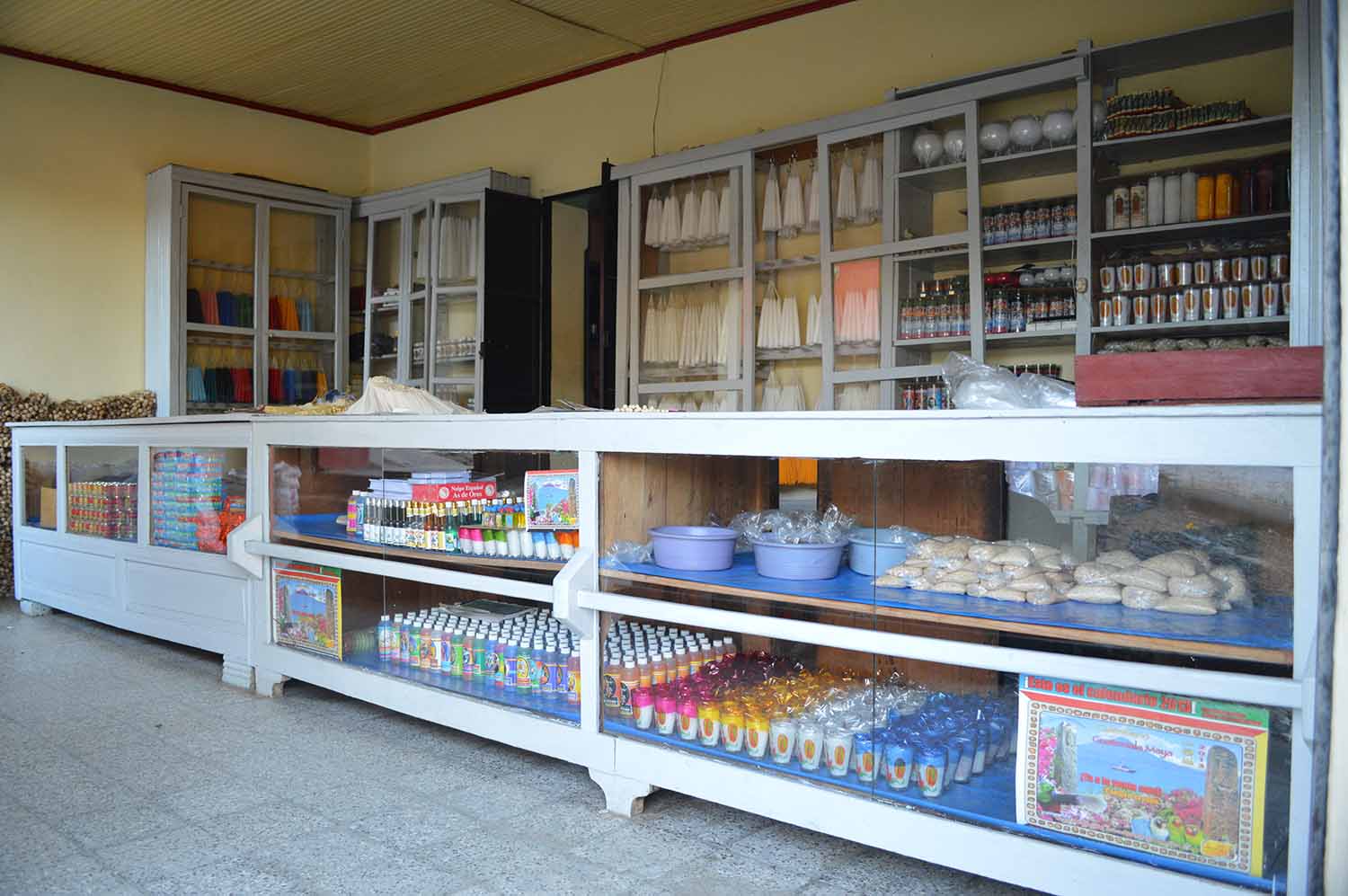

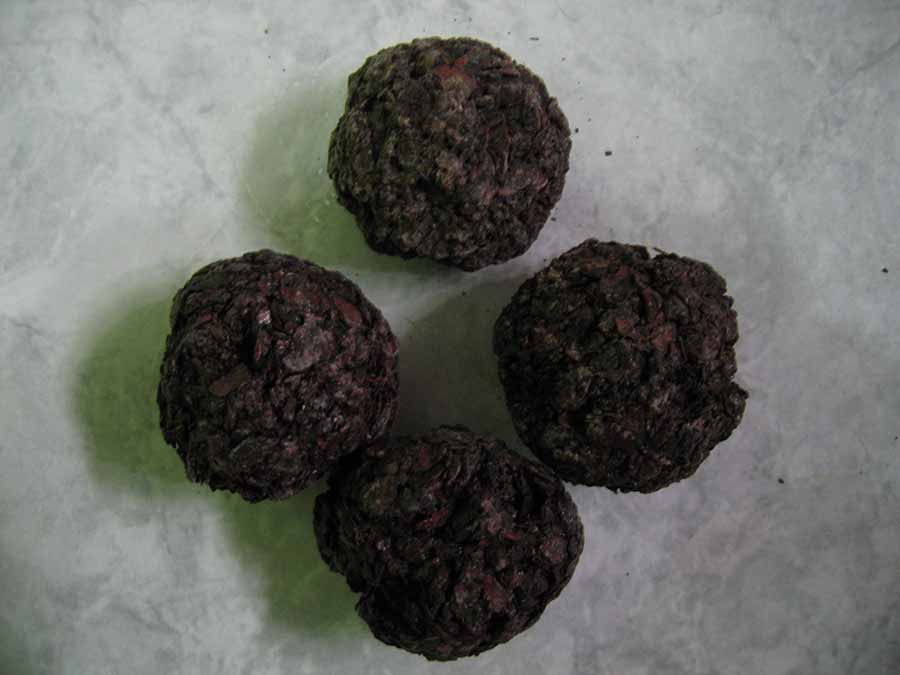
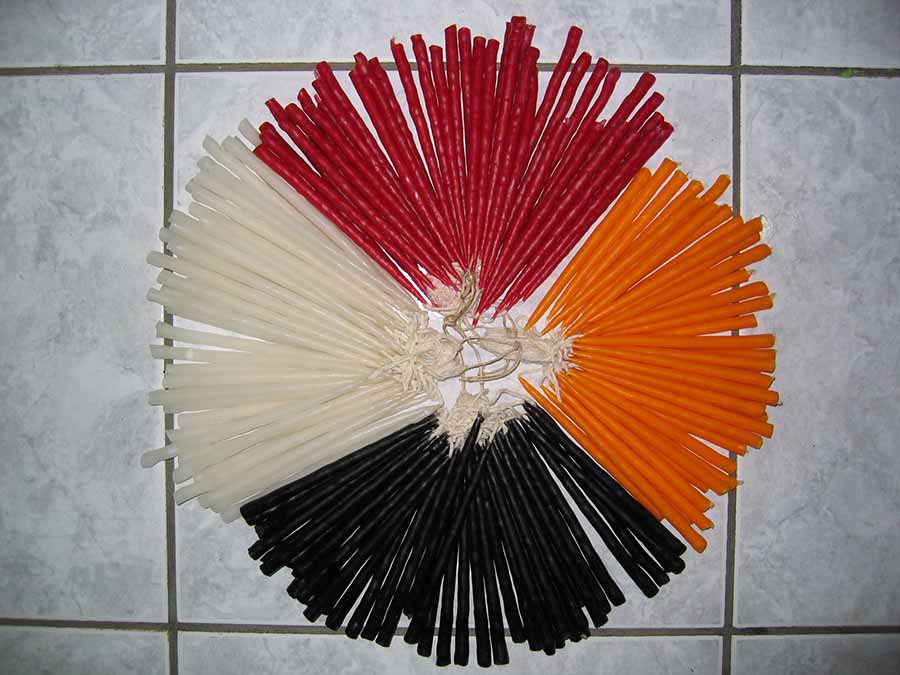
Figure 19. In every major town (~3000 or more people) between Guatemala City and the Pacific Coast, one can find a candelaria. While this is translatable as a candlery, these stores specialize in distributing the variety of goods and offerings required for Maya ritual.
Figure 22. The pine pitch material used to make the ensartes mentioned above comes in a variety of other sizes and shapes.
Figure 23. Though it is probably not a very old practice--such colorful candles only becoming available in the last few generations--the use of color has long been a central feature of highland Maya ritual. Colorful representations were probably accomplished through the use of flowers in the past rather than as seen today, as a mound of multicolored candles. Candles, though, have long been essential for private and public worship, just as in Catholicism. The four colors above are central for Maya cosmology: red represents east, black west, white north, and yellow south. Each of these directions has 5 of the 20 nawales specifically associated with it. Proper orientation is important in a number of rituals.
Bailes

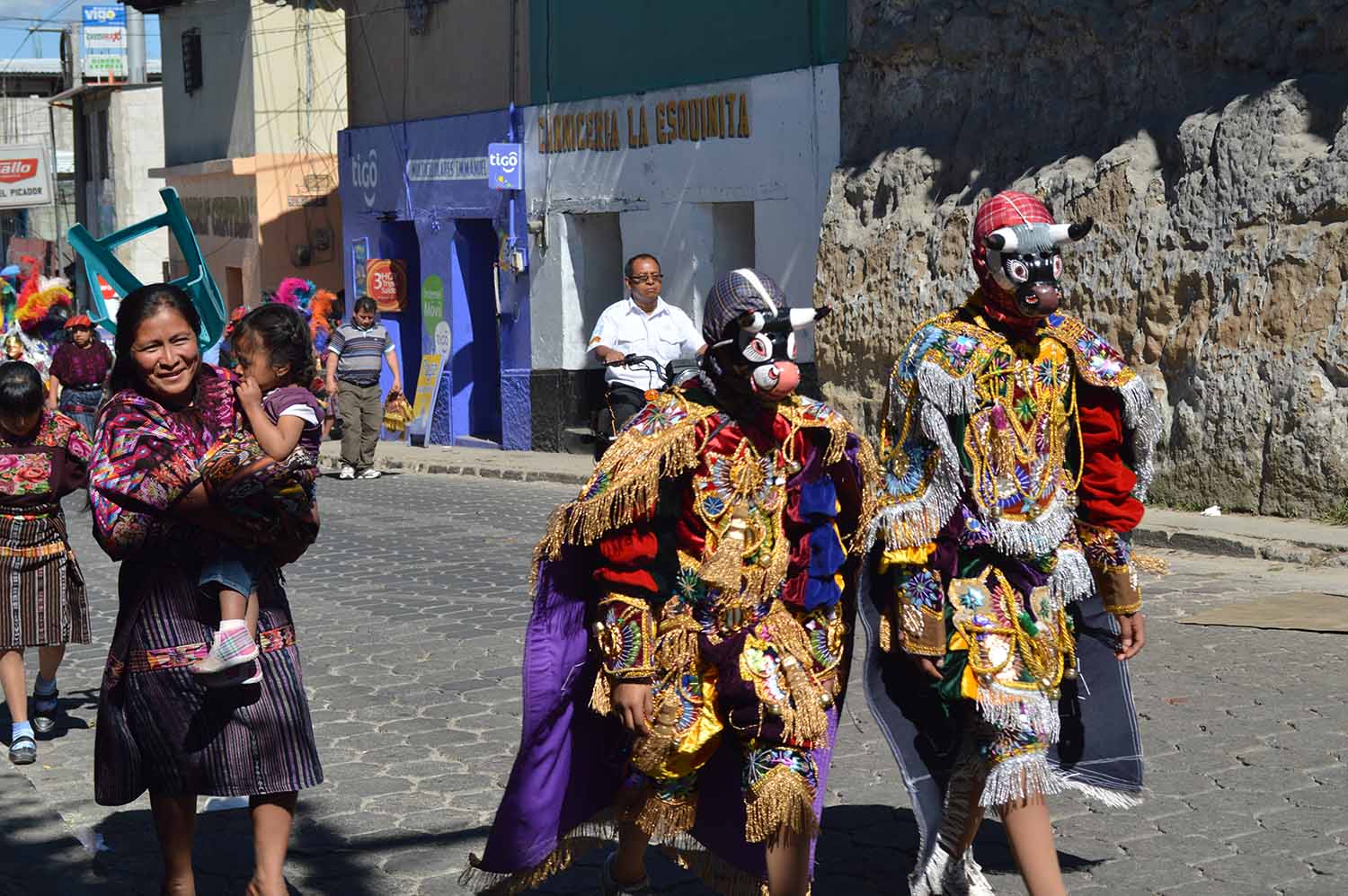
Bailes and convites, great dances and masked processions, are important occasions in Maya communities throughout Guatemala. A number of tales, both mythological and historical, are enacted each year through these celebrations.
Maximón
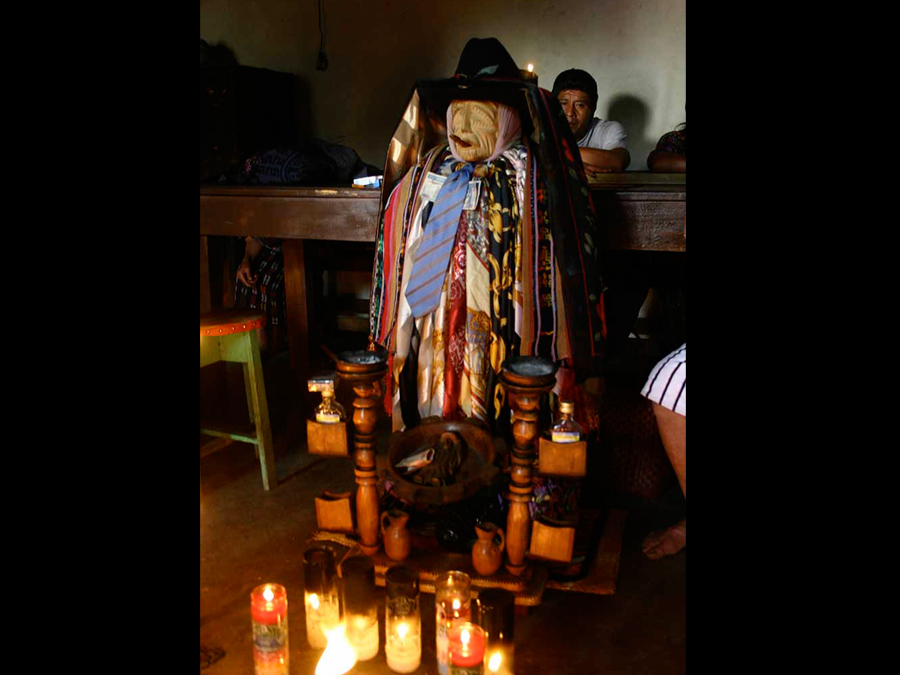
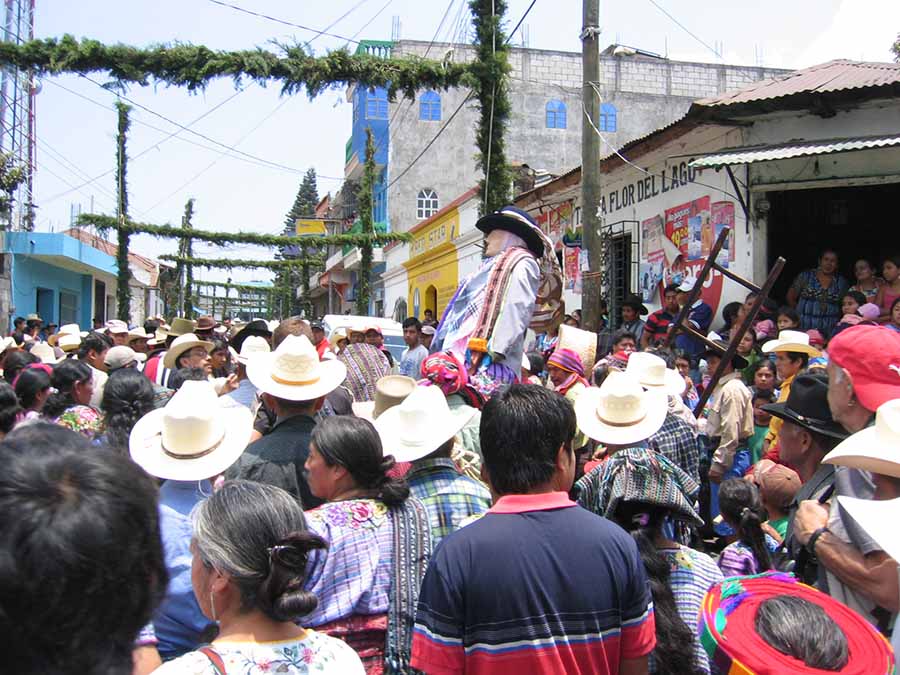
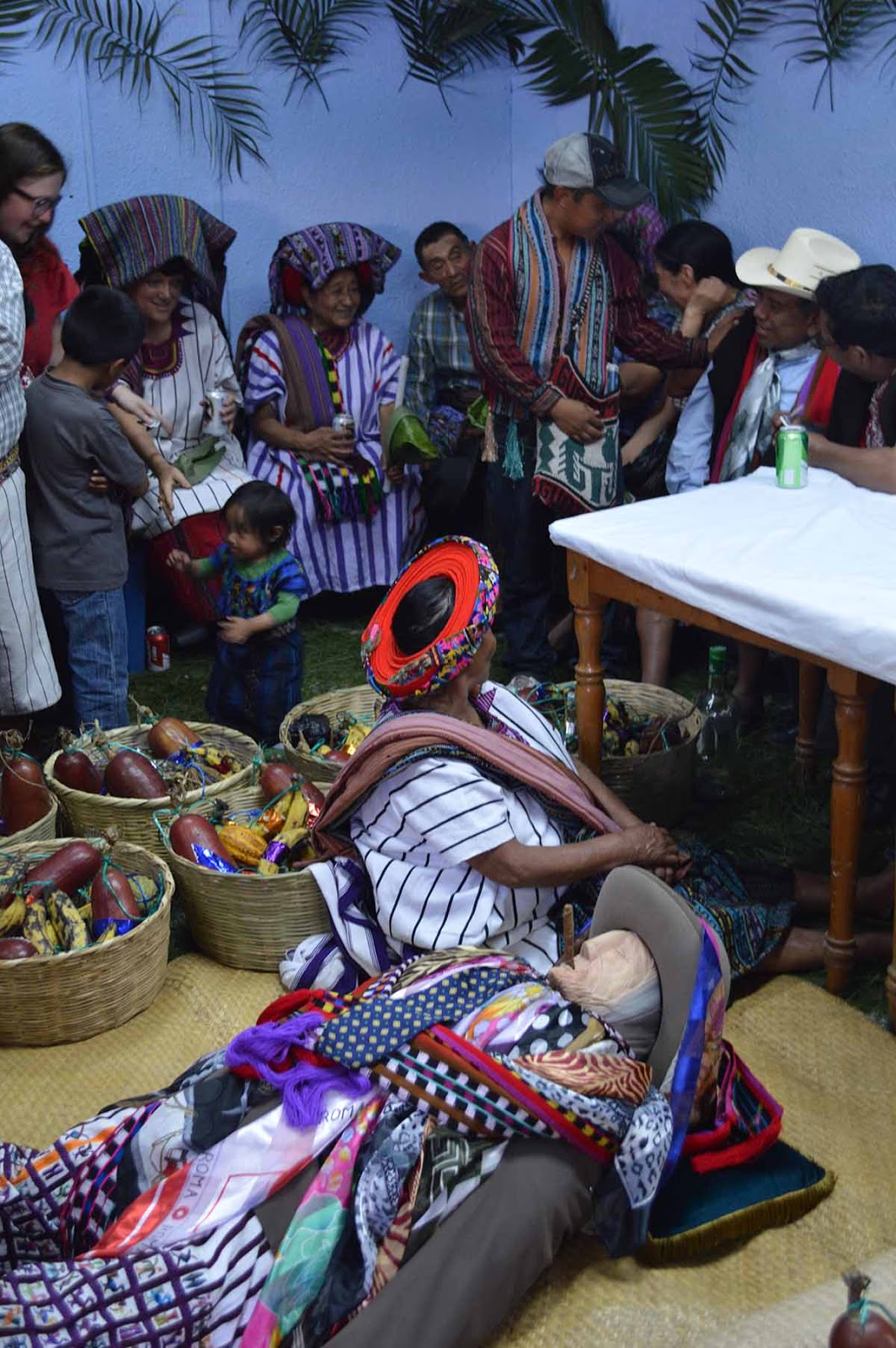
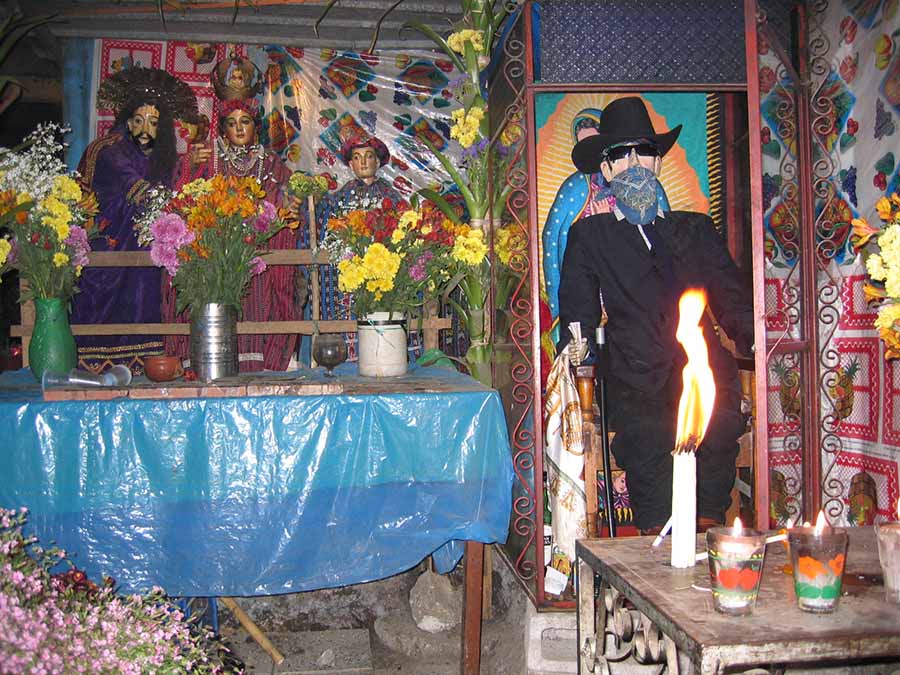
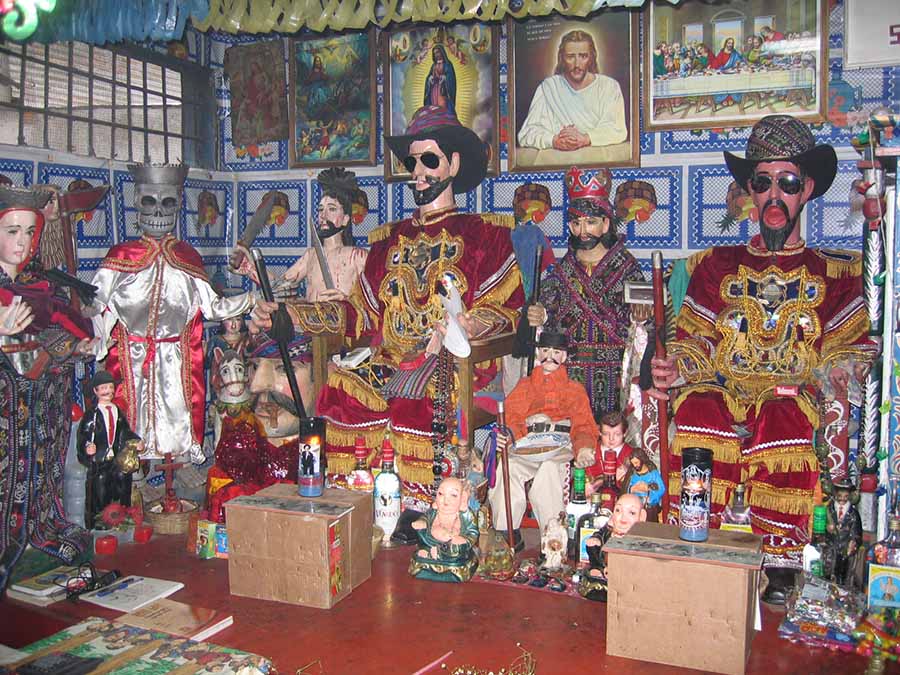
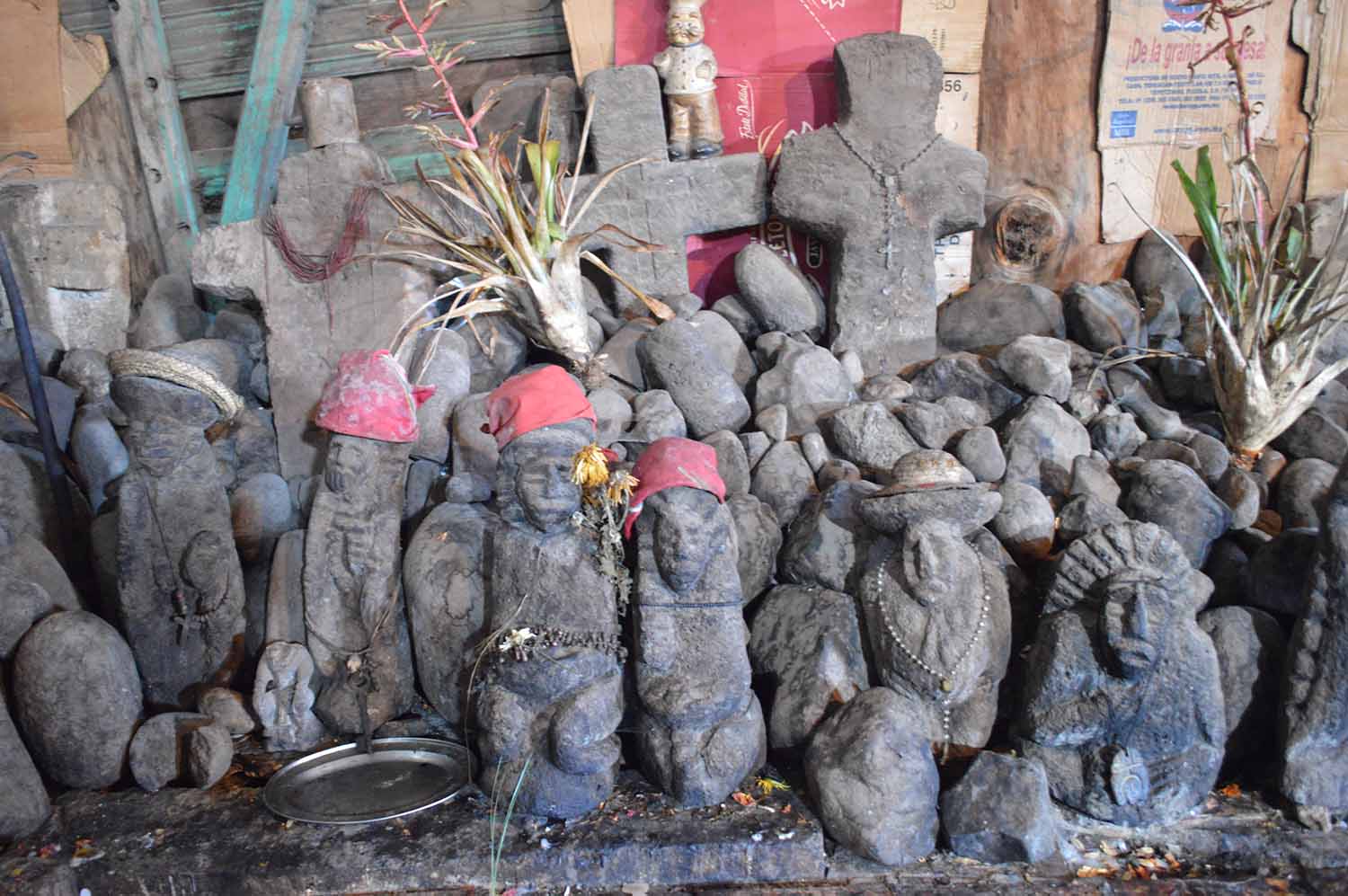
Figure 26. Perhaps the most mysterious, and infamous, figure in Maya spirituality is best known as Maximón, but also known as San Simón, Judas Iscariot, Rilaj Mam, and Mam, among many others.
Figure 30. Here, on the personal altar of a Kaqchikel ajq'ij, one finds multiple representations of Maximón, among a variety of other saints, deities, and religious figures.
Figure 31. Aj Iq', kab'awil, and other special stones are typical items on an ajq'ij's altar. For a post on the Material Religions blog about the role of stones in Maya spirituality, click here.
Tz'ite'
Tz'ite' (Erythrina corallodendron) is a squat and hardy tree, though its wood is not especially good for construction or combustion. Many legends and tales convey tz'ite' to be a communicative and powerful plant. Tz'ite' is frequently thought to be linked to Rilaj Mam, especially in Santiago Atitlán.
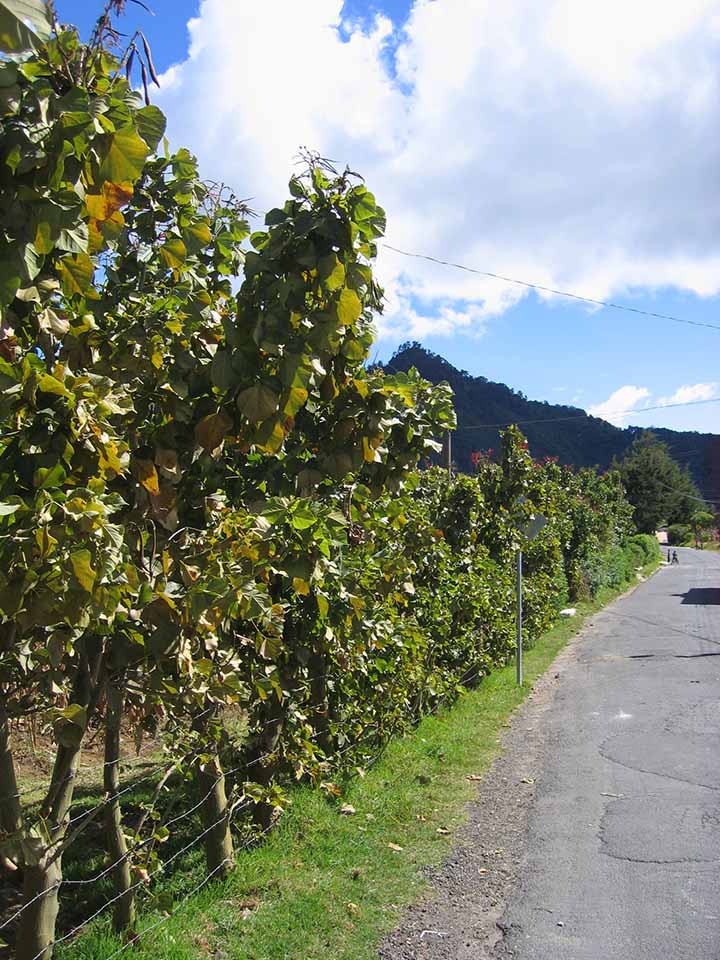
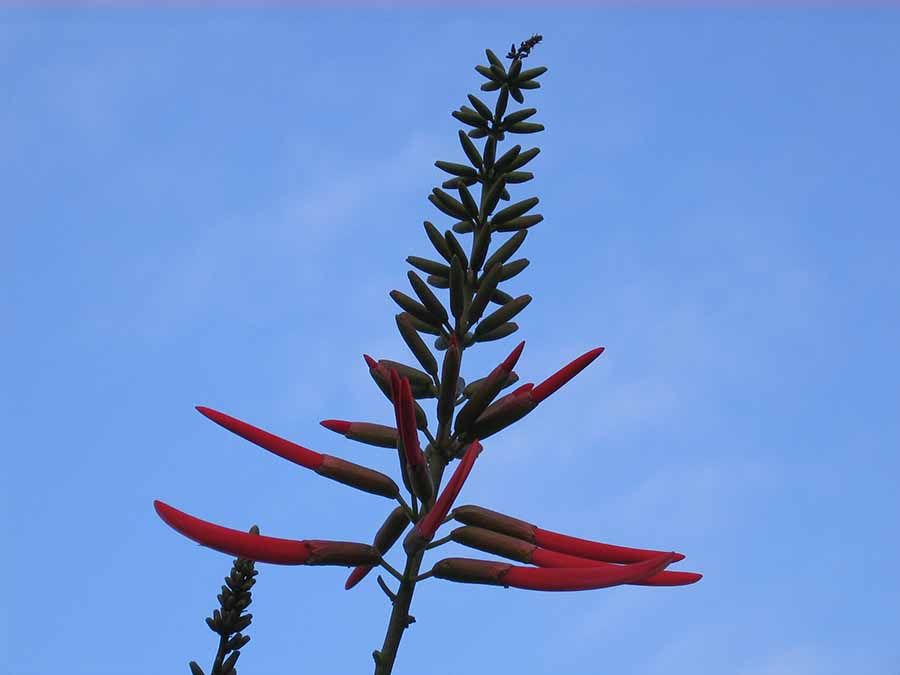

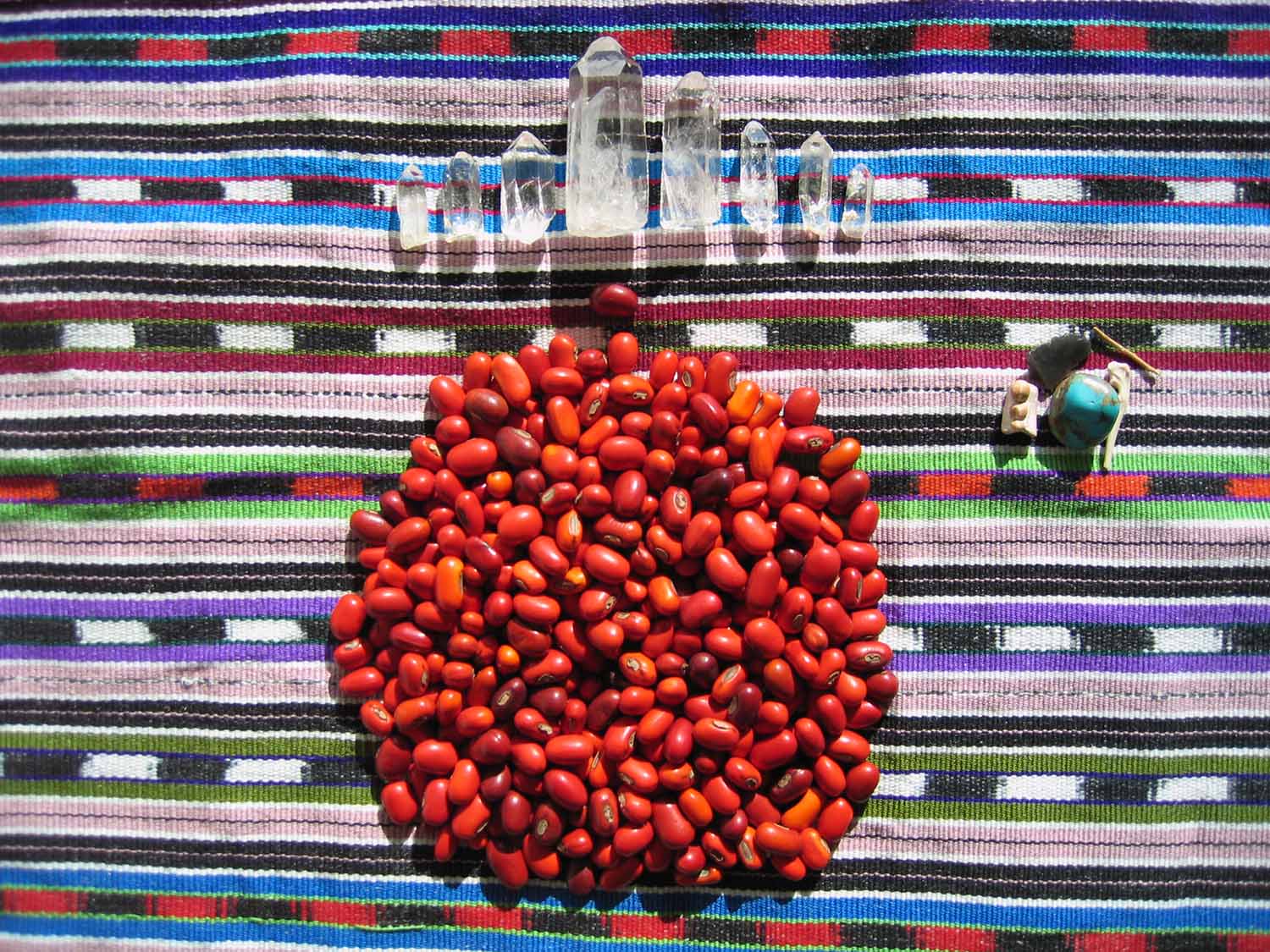
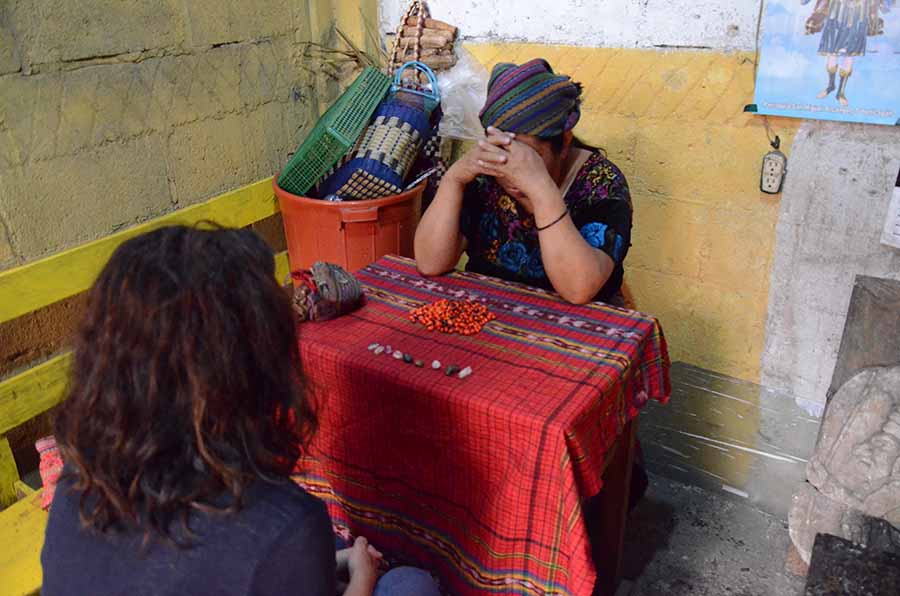
Figure 33. The Spanish name for tz'ite' is palo de pito, or "whistle tree." Its bright red flowers can be manipulated to serve as loud whistles.
Figure 34. Tz'ite' produces seed pods full of bright red seeds that look remarkably like pinto beans, except for their bright hue.
Figure 35. Tz'ite' are the chief components in the ajq'ij's holy bundle, known as la vara (Spanish for staff or rod), or simply tz'ite'. These bundles typically contain a symbolically important number of seeds, quartz crystals, and a variety of odds and ends, like small bones, minerals, archaeological items, and anything the ajq'ij encounters that s/he feels was particularly meant for la vara. The ajq'ij is awarded la vara, very much like a diploma, upon completion of a lengthy apprenticeship and initiation; often this is organized to be a 260-day period.
Figure 36. Many ajq'ijab' have the ability and skill to consult tz'ite' for divinatory purposes. Different techniques for consulting tz'ite' are employed across the highlands. Clients come to these diviners with questions about their, typically grave, concerns. This divination session is most commonly known using the Spanish term consulta; seemingly, the same kind of professional consultation one might have with a doctor or a lawyer. The information, revelation, solution, or decision that emerges from one of these consultas can be enlightening, surprising, inspiring, cut-and-dried, nerve-wracking, conflict-generating, but, more than anything, opens a path where there had been none before.






